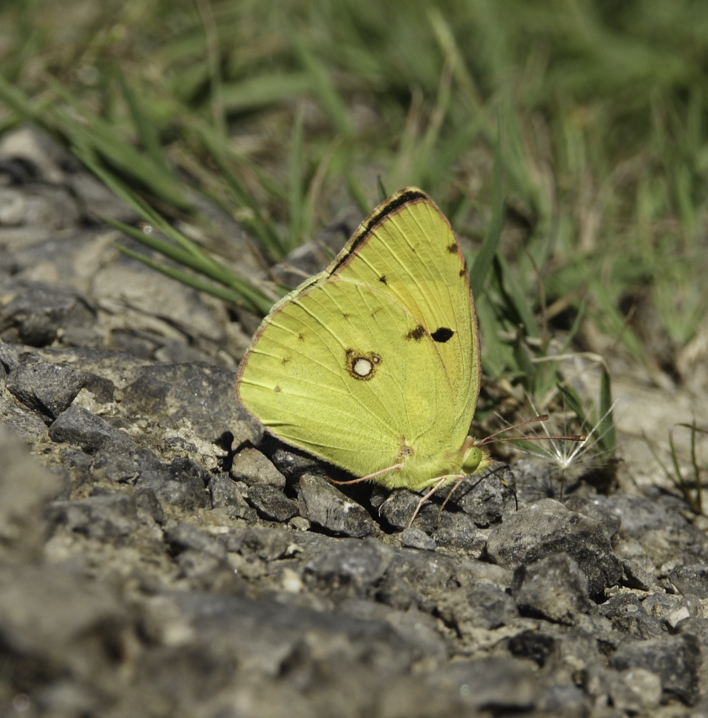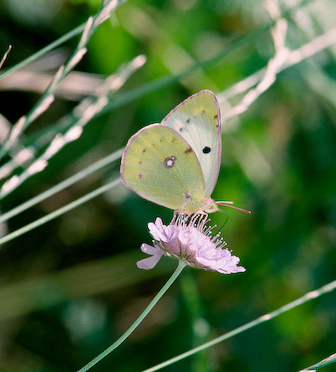Emergence
| Year | First | Second |
| 1976 | ||
| 1977 | ||
| 1978 | ||
| 1979 | ||
| 1980 | ||
| 1981 | 3 Aug WH | |
| 1982 | ||
| 1983 | 12 Jun WH | 30 Jly WH |
| 1984 | ||
| 1985 | ||
| 1986 | ||
| 1987 | ||
| 1988 | ||
| 1989 | 30 Jly WH | |
| 1990 | ||
| 1991 | ||
| 1992 | ||
| 1993 | ||
| 1994 | ||
| 1995 | ||
| 1996 | ||
| 1997 | ||
| 1998 | ||
| 1999 | ||
| 2000 | 14 Aug WH | |
| 2001 | ||
| 2002 | ||
| 2003 | ||
| 2004 | ||
| 2005 | ||
| 2006 | ||
| 2007 | ||
| 2008 | ||
| 2009 | ||
| 2010 | ||
| 2011 | ||
| 2012 | ||
| 2013 | 7 Aug BC | |
| 2014 | ||
| 2015 | ||
| 2016 | ||
| 2017 | ||
| 2018 | ||
| 2019 | ||
| 2020 |
Submit Your Records & Comments Here
Butterflies 1976-2020
Clouded Yellow


Wingspan - 55 mm
This is an occasional summer migrant to the UK from France, where it is abundant. Here in the UK the numbers arriving along our Southern coasts and flying inland vary from year to year. I have seen the butterfly along the ridge from Eynsford to Otford and at Sittingbourne, but might be seen anywhere, especially along the estuary corridor. Recorded in Bromley Common in 2013.
Habit: This bright yellow butterfly is prone to rests with wings closed, but on the wing it flies fast and low over rough pastures and suitably uncultivated road and railway embankments - especially where suitable foodplants are found. Once identified, never again mistaken for other yellow or yellowish butterflies or moths, except for the variety Helice shown.
Double brooded: the butterflies we see in the UK, breed here, but the offspring will not survive our winter and may move back South.
Larvae and Foodplant: Green larvae can be found from late May onwards on trefoils and leguminous plants.
Status: not in any sense under threat, but undoubtedly something of a victim of the commercial farming in Northern France. Populations are reinforced by Northerly migration from Southern France.
WH - White Hill Shoreham, BC - Bromley Common, BIC-Bickley, Kes - Keston, Ha - Hayes --BN - Bromley North - Ey Eynsford - Orp-Orpington, FACK - Fackenden Down and Bank
Thanks to Howard Walmsley and David Davis, Fred O'Hare
©Rodney Compton
